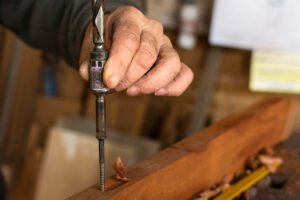Smoke curtains are an essential part of any building’s fire safety strategy. They are a light yet strong barrier that prevents smoke from entering and exiting a building.
Smoke curtains block smoke from traveling into other building areas, allowing occupants to escape more quickly and firefighters to enter more easily. They are often installed to work with other detection and response systems, such as smoke and fire detectors and alarms.
They prevent the spread of smoke
Smoke inhalation is much more likely to kill building occupants than fire itself, so smoke curtains are essential to any comprehensive fire safety system.
They work by preventing the spread of smoke in a building and creating a physical barrier against it, sealing off elevators and other large openings where smoke can easily travel through a building. It helps protect occupants and safeguard escape routes so they have more time to evacuate during an emergency.
In a fire, hot smoke can rise through the air in large halls and roof spaces, causing a significant overpressure that prevents smoke and heat exhaust ventilation from working effectively. A smoke curtain can channel the rising smoke to the correct point for extraction, ensuring there is no overpressure in the area and keeping occupants safe.
To understand what smoke curtains are there are different types, and each one is designed to serve a specific purpose in the event of a fire. They can be installed in various ways, and their effectiveness depends on their location and the level of smoke control required.
Vertical curtains are a great way to contain smoke while also slowing down the speed at which it moves through a building. They are a great solution for hallways and other areas that need to be slowed down to prevent the spread of smoke, and they can even work in conjunction with a fire door.
Draft curtains are another great option for containing smoke in a building. They work by breaking up the ceiling jet of smoke and pushing it toward the vents, directing the smoke away from exits. They also help keep contaminants from spreading throughout the building.
Prevent the spread of flames
Smoke curtains are a vital part of any building’s fire safety strategy as they prevent the movement of smoke and heat from one area to another. In addition, they can also help to reduce the risk of burns and other injuries caused by smoke inhalation.
When an alarm or other system activates a smoke curtain, it descends to the floor level and closes off the room. It allows occupants to escape safely while firefighters can quickly locate and extinguish the fire.
These curtains are also very useful for containing smoke and preventing the spread of fire to other areas within the building. They can be installed in stairwells and other open areas, making it easier for people to evacuate when needed.
There are a few different types of smoke curtains on the market, so choosing the right one is important. It would help if you looked at several factors before deciding, such as how many people will be using the space and whether or not the building is open plan.
In addition, you should consider the ceiling height in the room where the curtain is going to be installed. It is important because it will affect how much smoke the curtain can contain and what kind of ventilation can be achieved in the building.
Restrict the movement of heat
Smoke curtains prevent the movement of heat by containing it within defined areas. It ensures the smoke is not dispersed across a building and allows firefighters to evacuate the area safely.
They also channel hot smoke through ventilation systems to be expelled from the room and removed from the atmosphere, reducing toxic fume build-ups and preventing inhalation of toxins and gasses.
If the curtains are to be used in conjunction with other active fire protection equipment, they must be tested regularly by the building occupier. These tests should be carried out no less than once a month and at least weekly on escape routes.
Several different types of testing can be performed to check that a smoke curtain is working correctly and ensure that it can protect the life of occupants in the event of a fire.
They can also be tested for the safety of occupants by using fire and smoke sensors, which monitor the presence of both heat and smoke. If a sensor picks up any of these signs, it automatically triggers the smoke curtain to close. Depending on the smoke curtain’s configuration, this can be done via an alarm, detector signal, or manual switch.
Because of this, it’s essential to install smoke curtains in a way that makes them easy to deploy and remove. They should be able to be rolled up and dropped down in less than a minute if a fire breaks out.




Add Comment